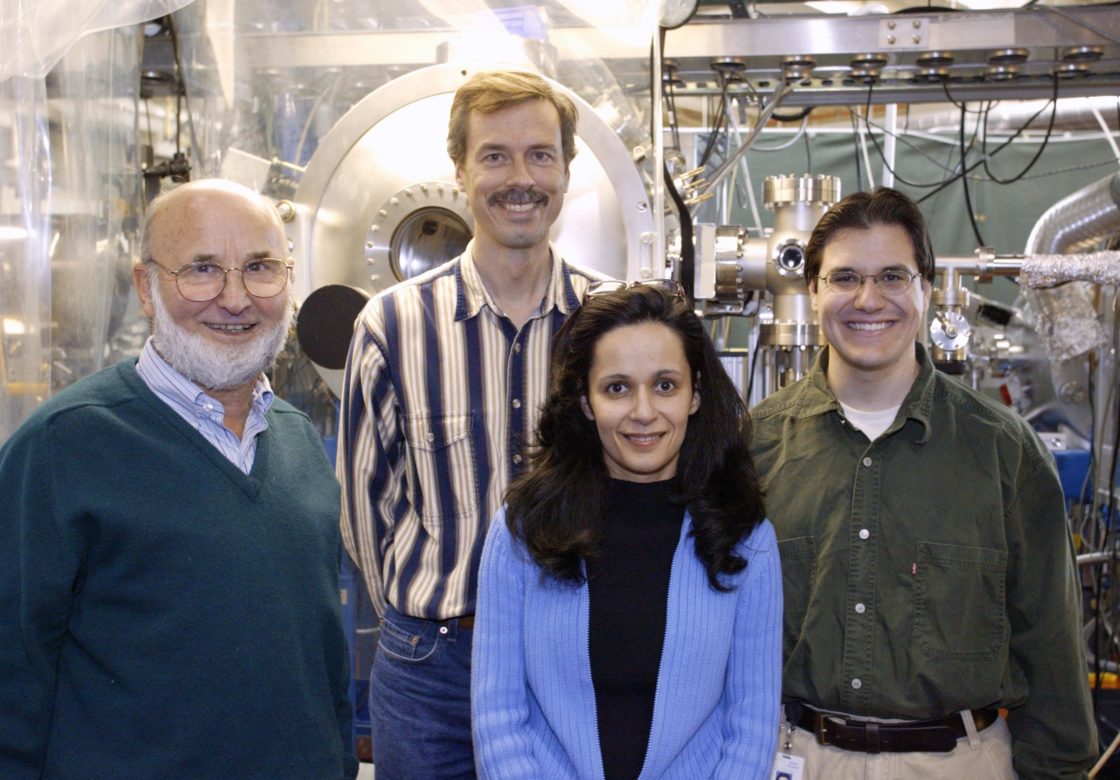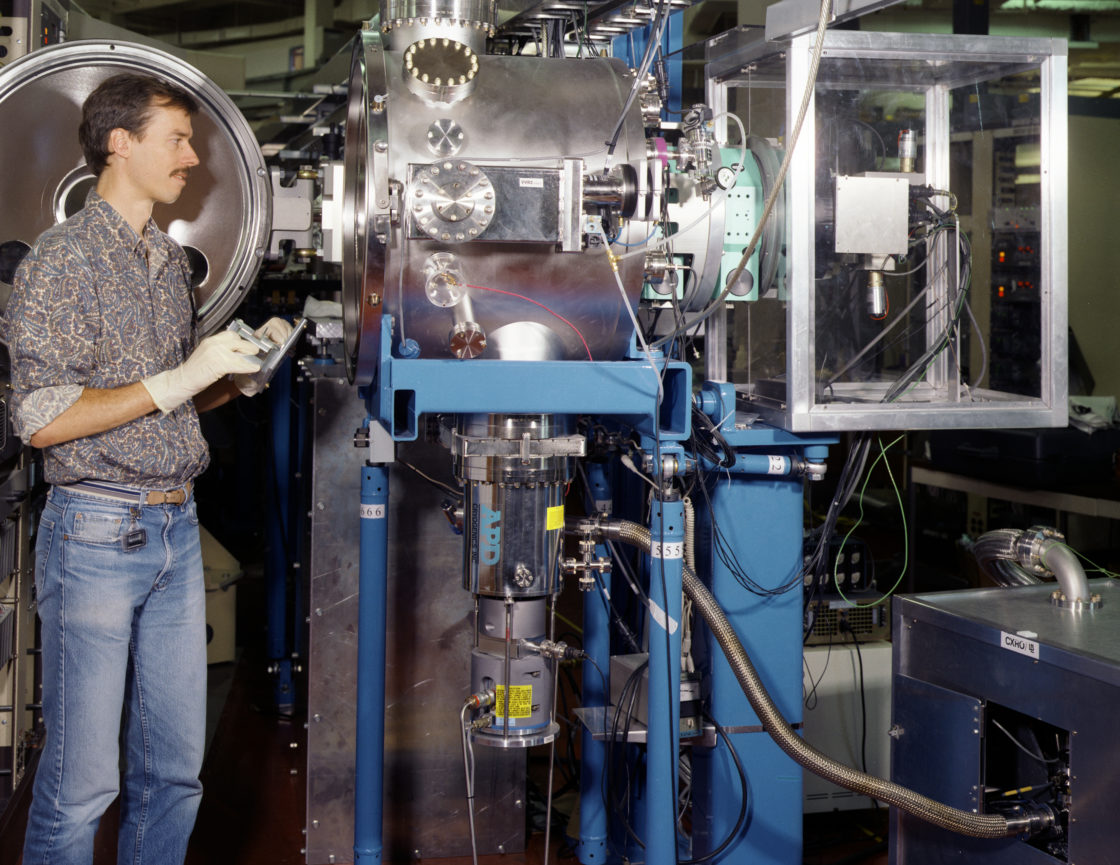 When Eric Gullikson first arrived at Berkeley Lab, the Advanced Light Source (ALS) did not yet exist. Thanks to his work, not only has the ALS grown in scale, capability, and renown, but other light sources worldwide have benefited as well. The ALS Users’ Executive Committee recognized Gullikson, staff scientist in the Materials Sciences Division’s Center for X-Ray Optics (CXRO), for “contributions to x-ray metrology that are central to building beamlines at the ALS and around the world.”
When Eric Gullikson first arrived at Berkeley Lab, the Advanced Light Source (ALS) did not yet exist. Thanks to his work, not only has the ALS grown in scale, capability, and renown, but other light sources worldwide have benefited as well. The ALS Users’ Executive Committee recognized Gullikson, staff scientist in the Materials Sciences Division’s Center for X-Ray Optics (CXRO), for “contributions to x-ray metrology that are central to building beamlines at the ALS and around the world.”
Gullikson’s interest in the field took root during his undergraduate studies. Growing up in Honolulu, he attended the University of Hawaii and worked in the lab of Burt Henke. Henke was a pioneer in the field of soft x-ray optics who was well known for the “Henke Tables” of the x-ray atomic scattering factors. In 1985 Henke joined Dave Attwood’s team at Berkeley Lab to form CXRO. Meanwhile, Gullikson earned a PhD at UCSD and completed a postdoc at Bell Labs before joining Berkeley Lab in 1987. Here, along with Jim Underwood and a talented engineering team, he built Beamline 6.3.2. “The goal for Beamline 6.3.2,” Gullikson said, “was to make the most accurate measurements of reflectivity.” This goal has certainly been met—and exceeded.

“Eric has established ALS Beamline 6.3.2. as the worldwide standard for development and calibration of state-of-the-art EUV and x-ray optics,” said Regina Soufli, a staff scientist at Lawrence Livermore National Laboratory. She noted that he was the first to measure large-area, flat or curved extreme ultraviolet and x-ray optics with picometer accuracy, a feat that, only 25 years ago, experts considered impossible. The capabilities that Gullikson developed at Beamline 6.3.2 have enabled the advancement and calibration of optics for EUV lithography, solar physics telescopes for NASA (including the Solar Dynamics Observatory), and beamline optics for light sources around the world. Daniele Cocco, ALS staff scientist, credited Gullikson’s diligence and deep knowledge of optics for the quality of the beamline. Cocco knows many who would rather use Beamline 6.3.2 than the beamlines in their home laboratories. Around the world, he has heard people explain, “It’s not calibrated as well as the Gullikson beamline,” or “You have more sensitivity on the Gullikson beamline,” or “The Gullikson beamline is more reliable.”

In addition, Gullikson has been instrumental in two projects with global impact. In the early days of the world wide web, Gullikson, inspired by a conversation with CXRO colleague Al Thompson, realized that the internet would be the perfect home for the atomic scattering factor Henke tables. The information had previously been distributed on floppy disks. “His contribution is benefiting the entire x-ray community,” Cocco said, “and the x-ray optics database is the primary reference point for all the beamline designers of the world.” Howard Padmore, ALS Photon Science Development lead, added that Eric continues to expand this database each year. Eric, his students, and his collaborators use Beamline 6.3.2 to make the measurements needed to extend and improve the data tables. Another project that Gullikson has contributed to is the X-Ray Data Booklet, a handy guide that’s used by x-ray scientists around the world.
Just as important to Gullikson is hearing updates from others working in optics and EUV lithography. He enjoys scientific conferences and encourages students to attend to learn more about the field. “It’s a small community,” Gullikson said, “so we can share notes and ideas.” He also collaborates with other light sources. “We do round-robin measurements, sending the same samples to other beamlines that are doing these types of measurements around the world. This allows all of us to cross-check each other’s work and improve our accuracy.”
This spirit of collaboration and camaraderie has also permeated Gullikson’s career at Berkeley Lab. “I was fortunate to work with many smart and talented people,” he said, and added, “I really appreciate the opportunity to have spent so many years here and am thankful for the support of the staff at the ALS. It’s great to be part of the ALS community.”
Klaus Halbach was a senior staff scientist at LBNL who pioneered the development of undulators using permanent magnets, and other innovations in accelerator physics. Even though he retired from LBNL in 1991, he remained active in lab projects and student training until his death in 2000.
